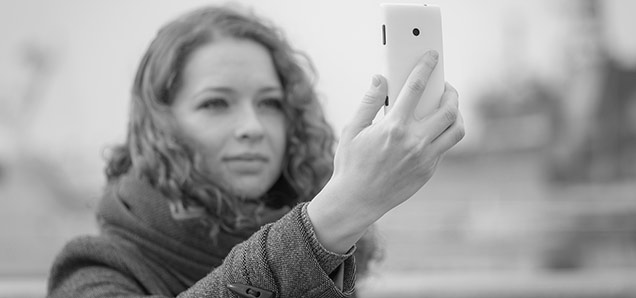ARTiculation: #NoFilter
 CREDIT: VLADIMIR ARNDT/THINKSTOCK
CREDIT: VLADIMIR ARNDT/THINKSTOCKWith selfie-taking more prominent now than ever, perhaps we should begin to embrace ourselves in our truest form? #nofilter
Despite being perceived by the art world as an endangered species, portraiture is alive and as prominent as ever. It just may not be manifesting itself how we imagined. It’s existed for centuries – you can’t crack a textbook or walk through an old building without seeing at least one rich dead guy staring at you from the wall. From Greek Emperors to British Kings, many have wanted to immortalize themselves through art. And now we’re doing the same thing, but rather than sitting for an artist, trying not to scratch our noses, we’re snapping self-portraits by the minute.
Even in the earliest examples of portraits, we see vanity showing through the thick brushstrokes. Fayum mummy portraits from ancient Egyptian tradition were made as a way to identify and memorialize the dead. They would paint busts on wooden tablets and then tie them to the head of the mummified body. With research, we’ve come to understand that the artists who painted these renditions would modify the person’s appearance to make them fit into a formula of “what a person should look like.” It appears that most paintings have one of a few decided face shapes and then personalized features, like a beard or long hair.
Recently there’s been a sweep of articles surfacing that talk about our tendency to present a perfect life to an audience through social media. It’s easy to make yourself seem flawless when you get to go through your documented life and select the pieces that best represent how you want to be. Selfies are an excellent example of impure self-portraiture. You’re bound to look good in at least one of the 40 pictures you took from various angles. Fabricating perfection is something we’ve taken great advantage of for centuries but just like many other things in our bloated culture, we’ve exploited the opportunity.
Frida Kahlo is one of the most famed examples of honest self-portraiture in modern art. In her career as a painter, she finished 55 self-portraits, each one of them different and individualized. She painted herself in what she felt was her truth, both flattering and unflattering. She would often include objects or facial expressions that documented how she felt about that point in her life. In one of her most famous portraits (Self Portrait with Necklace of Thorns and Hummingbird, 1940), Kahlo depicts herself with a necklace of thorns digging into her skin, symbolizing the pain she felt from her divorce. Attached to the necklace is a dead hummingbird, the symbol to bring luck in a romantic life, and a black cat peering over her shoulder, ready to pounce on it.
“I never painted my dreams. I painted my own reality.”
We’ve gotten to the point that it’s brave to post a photo of yourself with no makeup – a challenge. It’s like a weird, unspoken understanding that everyone is walking around in their masks. Right now, on our mark in history, the photos and digital trail we leave are telling a tale of a tense, insecure society. But people are beautiful even… especially, in the rawest form. And if we all decided to show ourselves how we really are when we wake, eat, run, walk, be human, none of us would need the filters and editing. Although that concept might be just as idealized as my latest selfie.
Editorial opinions or comments expressed in this online edition of Interrobang newspaper reflect the views of the writer and are not those of the Interrobang or the Fanshawe Student Union. The Interrobang is published weekly by the Fanshawe Student Union at 1001 Fanshawe College Blvd., P.O. Box 7005, London, Ontario, N5Y 5R6 and distributed through the Fanshawe College community. Letters to the editor are welcome. All letters are subject to editing and should be emailed. All letters must be accompanied by contact information. Letters can also be submitted online by clicking here.













